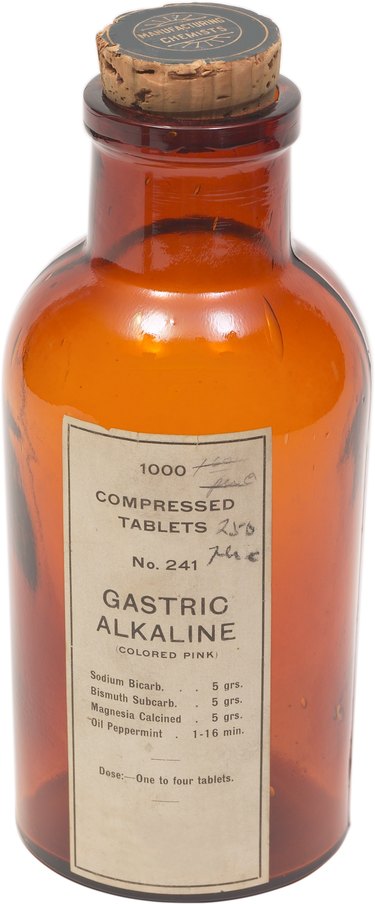
When food arrives in your stomach, it plunges into a warm bath of hydrochloric acid. This corrosive stew accelerates digestion and provides the right conditions to activate an important digestive enzyme also found in your stomach. Chemists measure the concentration of solutions using a unit called a mole, and the molarity of the acid in your stomach is remarkably high.
Molarity
Video of the Day
A mole is a unit equivalent to 6.022 x 10^23 molecules, atoms or ions of substance. The weight and mass of a mole vary depending on the element or compound in question. A mole of gold atoms, for example, would weigh much more than a mole of hydrogen molecules. The molarity of a solution like gastric juice is the number of moles of substance dissolved in one liter of solution. A one-molar solution, for example, would have one mole of solute for each liter of solution.
Video of the Day
Acidity
Molarity is an especially convenient way to measure concentration of stomach acid because hydrochloric acid is very strong, so just about all of the HCl molecules split up into H+ and Cl- ions. The H+ ions do not float freely in solution, but attach to water molecules to become H3O+. The pH is the negative log of the hydrogen ion concentration in moles per liter, and since hydrochloric acid is very strong, the pH becomes the negative log of the hydrochloric acid concentration.
Secretion and Dilution
The cells responsible for producing the HCl in your stomach are the parietal cells, and the solution they secrete has a concentration of 160 millimoles per liter -- in other words, 0.16 moles per liter, corresponding to a pH of 0.8. In the stomach, however, the solution becomes diluted to a pH between 1 and 2, which corresponds to a hydrochloric acid concentration between 0.1 and 0.01 moles per liter.
Secretion Process
In the parietal cells, transporter proteins ferry chloride and potassium ions outward across the membrane. A proton pump exchanges hydrogen ions for potassium ions, so the net effect is the accumulation of HCl with a little KCl. Typically, the concentration of potassium chloride is about 15 millimoles per liter, or 0.015 moles, per liter. Trace quantities of sodium chloride are present as well. Neither salt is acidic or basic, so they have no effect on the pH.